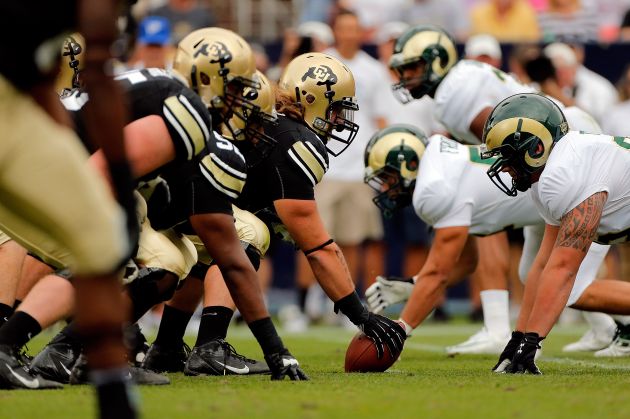This is Part II of an eight-part article. The other parts are linked below:
Part I: Intro
Part II: Why G5 schools will be included in Division IV
Part III: Why Larger Conferences is the Way to Go
Part IV: Building the Big Ten
Part V: Building the SEC
Part VI: Independence Based Conference Scheduling (IBCS)
Part VII: Building the Group of Four (G4)
Part VIII: Loose Ends

1. It would damage pre-existing Power-Five (P5) vs. Group-of-Five (G5) rivalries such as BYU-Utah, Colorado-Colorado State, Navy-Notre Dame, and Utah-Utah State.

2. There are a number of G5 schools that are arguably better than several P5 schools athletically. In any given year the top teams from the G5 are usually better than the top teams from the P5.
Last year UCF beat Penn State in Happy Valley, lost by only three points to a South Carolina team that would go on to end the season at #4 in both polls, and finished the season with a win over Big 12 champion Baylor in the Fiesta Bowl. At the same time the Knights, which will be a G5 program starting this season, went 4-1 against teams that will be P5 programs starting this season as well.
UCF is one of many G5/non-BCS programs that have given P5/BCS programs a run for their money. Excluding these teams would not only take away a vital “Cinderella team” storyline that is popular among college sports fans, but it would also undermine the integrity of this new division. Without the involvement of these schools in Division IV, it would be labeled as just another attempt by the P5 to weed out their competition by eliminating G5 schools from contention.
3. Several G5 schools have come extremely close to obtaining a P5 invite in the past (UCONN & BYU). It would be completely unwarranted to give their programs a deathblow when the only reason they are not included was due to a weakness in networking or being blocked by other schools.
4. The Western portion of the United States lacks an abundance of Division I and/or FBS schools. In the past this has set some limits on the Pac-12’s ability to schedule quality teams in not only football, but also other Division I sports as well. A Division IV without these universities would strain the relationship between the Pac-12 and fellow western Universities. This has the potential to prevent matchups between some of these schools altogether. This would turn what is currently a manageable problem for the Pac-12 regarding scheduling into a nightmare scenario.
5. Several G5 schools have been at the highest level of college football since the early 20th century. A Division IV without these would be the first time ever that many of these schools would be outside the highest level of college football. Programs such as Army, Navy, SMU, and Rice have been classified in the top college football division for as long as Michigan, Texas, and Notre Dame have been at that level.

6. There are six states (Connecticut, Idaho, Hawaii, Nevada, New Mexico, & Wyoming) whose only FBS school(s) are in the G5. There are also a number of states that also have a significant amount of their FBS schools in the G5. A P5/G5 split would set off a political firestorm in some of these states. Politicians will put pressure on P5 schools/conferences to include a number of G5 schools as well. The whole purpose of this project was to not only make a hypothetical Division IV, but to make it as realistic as possible without any “what ifs.” The question of whether or not politics would get in the way of this is a big “what if” which is why I tried to minimize this issue by circumventing this problem.
7. The bottom half of the P5 rely on games against weaker opponents to maintain a somewhat respectable record each season. Without these games, certain P5 programs who already struggle to post a respectable record each season will be looking at eight or more losses a season on a regular basis. Consecutive seasons with records like that make it difficult to attract talented coaching, top recruits, or boosters willing to donate to the program. This puts programs such as Indiana or Kentucky into a vicious cycle where the lack of quality talent leads to subpar athletic performance and vice versa.
8. Lastly and most importantly, is the basic concept of football that athletic success cycles. Some teams rise, while others fall. It is always evolving and to cut off teams like UCF right now when they are coming off phenomenal growth would be a travesty to the sport. There are a number of G5 schools that can grow into decent football schools over the next decade or two. Capping their growth right now and regulating them to the 2nd tier of college football would damage the sport and be a huge injustice.
Follow @sportspolitico
Send us an Email: sportspolitico@gmail.com
© sportspolitico™ August 14, 2014
Like what you see? Check out more sportspolitico™ articles below.
